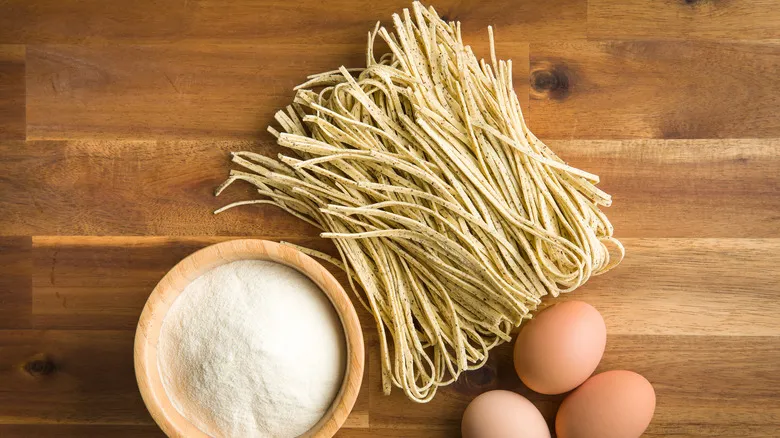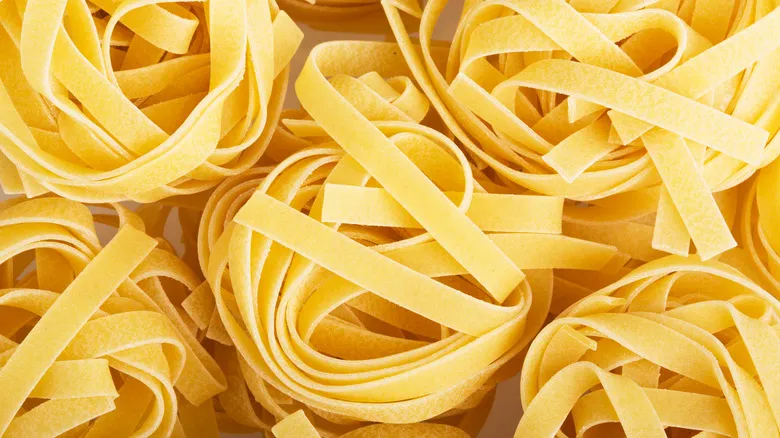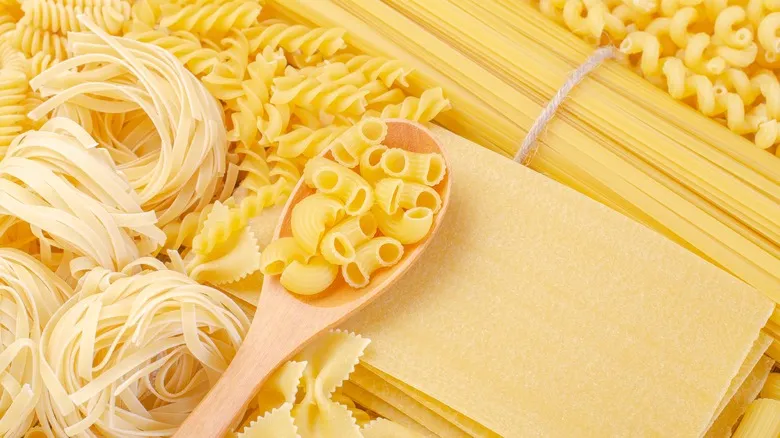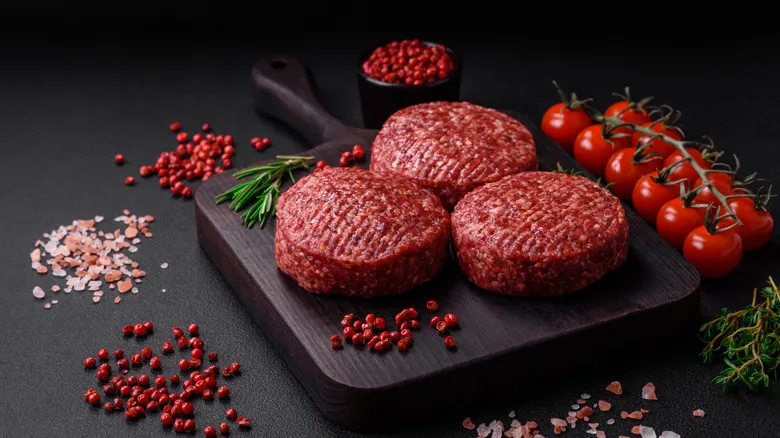What is tagliolini?

Tagliolini hails from Piedmont in northwestern Italy. This pasta is long and exceptionally thin, featuring a delicate texture that distinguishes it from other ribbon pastas like spaghetti. Both tagliolini and tagliatelle derive their names from the Italian word "tagliare," meaning "to cut," which refers to the way these pastas are sliced into narrow strips. Tagliolini is thinner than tagliatelle, resembling a flattened version of spaghetti, typically measuring just 1 to 3 millimeters in width. Unlike tagliatelle, tagliolini has a slightly cylindrical shape, resulting in limited surface area for heavy meats or toppings to cling to. Its delicate structure makes it perfect for lighter sauces that won’t overwhelm or break it. Traditional pairings for tagliolini include simple broths, sage sautéed in butter, or seafood sauces.
Due to its thinness, tagliolini cooks very quickly—usually in just two to three minutes—making it a popular choice for busy home cooks. The subtle nature of this pasta allows it to harmonize beautifully with its sauce, making it the ideal noodle for showcasing dishes with carefully balanced flavors or particularly impressive ingredients.
What is tagliatelle?

Tagliatelle originates from the Italian regions of Bologna and Emilia-Romagna. This pasta is a wider, flatter ribbon, akin to fettuccine. Like tagliolini, tagliatelle is typically crafted from a dough made of flour and eggs. However, it is noticeably broader, with each strand measuring approximately 6 to 8 millimeters in width. Thanks to its thicker texture, tagliatelle pairs exceptionally well with hearty sauces such as pesto, marinara, or creamy mushroom sauce. Due to its size, it requires a longer cooking time, usually around 7 to 10 minutes.
These robust noodles are ideal for meat-laden dishes like ragù and Bolognese. The wider shape of tagliatelle provides a solid base for thick sauces, ensuring a burst of flavor in every bite. Tagliatelle is a highly versatile pasta, making it a great staple for home cooks, as it complements both meat-based and creamy sauces beautifully. In contrast to tagliolini, which is better suited for lighter, more delicate pairings, tagliatelle is perfect for those who desire a more hearty and satisfying meal. If that resonates with you, consider this tip for enhancing the richness of your pasta dishes.
Choosing between the two

When choosing between tagliolini and tagliatelle, your decision ultimately hinges on the kind of dish you wish to prepare. Tagliatelle is the go-to pasta for those seeking a hearty and comforting meal. Its broad, flat ribbons are designed to pair well with rich, meaty sauces, making it ideal for dishes that emphasize depth and robust flavors. The pasta offers a satisfying, chewy texture that complements substantial, comforting fare.
In contrast, tagliolini is perfect for lighter, more delicate dishes that highlight subtle flavors and can be prepared quickly. Its silky, soft texture pairs beautifully with more refined sauces. This pasta is an excellent choice when you want it to enhance the dish without overpowering it. Ultimately, the primary distinctions between tagliolini and tagliatelle lie in their shape and texture, but both are delicious and worth exploring. Additionally, there are countless unique pasta shapes available, each serving different culinary purposes, so you really can’t go wrong with any choice you make.
Recommended

Gordon Ramsay's Tip For The Best Steak Lies In A Pantry Staple

The Reason You Should Skip Preformed Burger Patties

Upgrade Your Trader Joe's Mini Sheet Cakes With An Easy Presentation Hack

What's The Importance Of Using Buttermilk In Biscuits?
Next up

